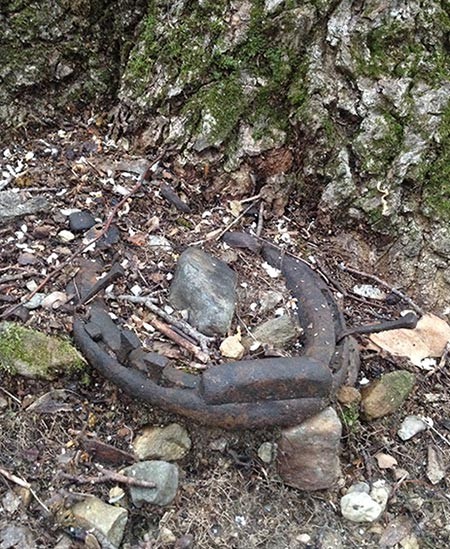
This is my fifth year writing a sugaring journal for this editor’s blog, and one of the nice things about having a written record of an annual event is that you can go back and check your notes. I can be as prone to hyperbole as anyone, and over the course of the last few months have caught myself saying: “I’ve never seen a winter like this,” or “I can’t remember a year when I didn’t have a plow bill,” or “I don’t think I’ve ever seen the Hall bush without snow in February.”
I went back and scanned the old blogs, and noted that the last time there was no snow while we were tapping in early February was way back in 2013. The last year I didn’t have a plow bill as of mid-February? 2012.
Jokes at my own expense aside, it was a truly historically warm December, and it’s been a warm winter overall for sure. It’s a whole lot different out there in the sugarbush than it was last year and the year before that – both years that featured thigh-deep snow and bitter cold through March.
So how will the warm winter weather affect this year’s maple season? The only thing we know for sure is that warm temperatures in January allowed for early sap runs, so sugarmakers who had their act together enough to collect and process this sap got a jump on the year. I talked to a producer the other day up in the Northeast Kingdom who made a bunch of syrup on Groundhog’s Day.
The warm weather and low snowpack have also, relatively speaking, made the woods work a breeze. There’s a lot of preseason work that goes into sugaring, as you’ve got miles and miles of tubing that have been ignored for the last 10 months. Tree limbs fall on it; squirrels and deer and coyotes and foxes and bears and mice chew on it; deep cold snaps break it apart. Before you touch a drill bit to tree bark you’ve got to get your infrastructure up and operational. Having a few inches of snow on the ground while you’re doing this makes things exponentially more difficult, as it’s slick, and fittings and drill bits fall in the snow, and everything’s wet. Having thigh-deep snow, as we did last year and the year before that, turns things molasses-slow. It took us a month and a half to get tapped last year, and we weren’t fixing lines that had big issues; we’d just snipped ’em and capped ’em and didn’t tap those trees. This year, we started the woods work on February 1, fixed all the infrastructure problems we’d capped off over the past two seasons, replaced some sections of mainlines and three or four hundred drops, and finished tapping in 19 days. On probably a third of the days there was completely bare ground in the woods. We were bouncing around from tree to tree like teenagers.
So that’s what we know. How things will unfold from here is anyone’s guess. With luck we’ll have a season like we did in 2013, where at our bush, anyway, low snow was accompanied by exceptionally “normal” weather all spring. Consistent weather that’s close to seasonal norms is a sugarmaker’s friend. If we get two to four weeks of that between now and mid-April, we should make a crop. Four to six weeks and we’ll do great.
The big fear we all have on this El Niño year is that things won’t be “normal;” that it will get too warm too fast, like it did in 2012. If you remember that was the year that in mid-March we had a week of 70-degree weather, which effectively killed the season.
Shop talk aside, it’s been really nice out in the woods over the past few weeks. The deer have been in eating the tops of some white pine we felled; foxes have been doing courtship dances at the meadow’s edge; a big male fisher has been working a ledgy section of hillside where the porcupines den. These stories were all written in tracks. The days have been getting longer – we’re working until 6 p.m. in the woods, which feels like a blessing. The other day we tapped in driving rain, which felt intimate – a way of feeling the changing season on your skin. As darkness fell I could no longer see our helpers up on the hillside, their dark rainsuits the color of dusk and stone. But little flashes of light from their drills pierced the gloaming. Little early stars twinkling amidst the maple boles. That night I hung my wet clothes above the woodstove and fell asleep on the couch, listening to drops of water falling off my wool pants into a tin ash bucket on the floor below. That dripping sap cadence that makes our ears perk up a little bit; a drumbeat we can feel in our blood this time of year like the rhythm of the human heart.
They’re calling for good sap weather in southern Vermont this weekend; it should be our first boil of the year. I always enjoy it when other sugarmakers write in the comments section of this blog. If you’re one such sugarmaker, tell us how things look from where you sit.


Discussion *